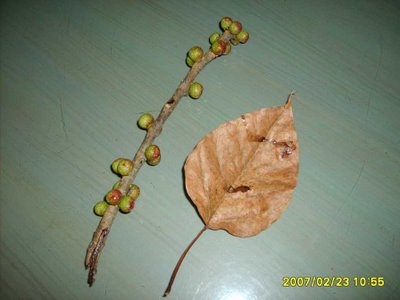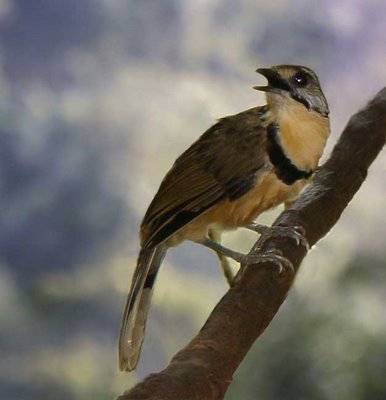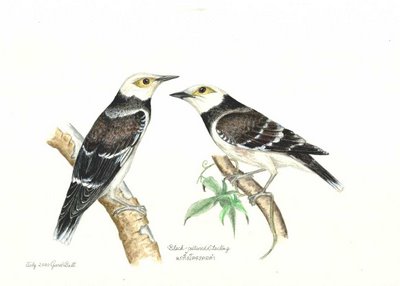The Grouse season is upon me!

Part of the Bodhi Tree (ficus religiosa)
(February 20th HTT) Temp. at 0700 15c. - The Rufous-winged Bushlark is now becoming easier to see as it goes into its display flights. It flies straight up into the air (about 20 metres) and then parachutes down with wings in a V shape and legs stuck straight down, quite comical.
I was getting a little bit worried at not having seen our Black-capped Kingfisher for about a week when it suddenly reappeared. It really shouldn’t have been here in the first place as it is down as a passage migrant here in the north. Last year one also decided that it had gone far enough and settled in for the winter.
Well now I know that we have at least three Spotted Owlets in the area. They were screeching at each other for at least 15 minutes without let-up.
Something else happening without let-up is the noise and dust produced by a mechanical digger. It seems to me that the driver is giving the illusion of doing something useful but on carefully watching him I realised that he was just pushing the same piles of dirt backwards and forwards. Am I missing something or is he just trying to keep his job?
(February 23rd Mae Hia) Temp. at 0700 13c. Smog was particularly bad, by the end of the morning I was wheezing like an old man – wait a minute, I am an old man, but I’ve never wheezed the way I did this morning.
A Rufous-winged Buzzard was seen building a nest. For the next few months we’ll know where to find one.
The Junglefowl are way ahead of this buzzard, one female was seen with six chicks.
Another tree of interest is the Bodhi Tree (Ficus religiosa). This morning I was drawn to it by the racket the Common Koels were making. It turned out that there were at least ten of them plus five Coppersmith Barbets and untold numbers of bulbuls and mynahs. The fruit were just the right size to go down in one swallow for the larger birds (1.2 to 1.5 centimetres) and the smaller birds were taking chunks out of them.
Another bird that has been keeping to itself is the Rufous Woodpecker. This morning I heard its drumming with the hesitant stutter at the end and then caught sight of it. It’s not quite as outgoing as the Fulvous-breasted Woodpecker, with its drumming, but its cackling laughter can often be heard at this time of year.
(February 27th Mae Hia) Temperature at 0700 20c. A very hot morning and the birds weren’t so active as they have been. The Common Koels were back in the fig tree in their numbers and as noisy as they have been for last few days, along with the Barbets, bulbuls and other smaller birds.
I watched the Rufous-winged Buzzard making fine adjustments to the twigs in the nest, it really did seem fussy about where every twig went. Finally satisfied it went off to collect some more.
Two Hoopoes seen, one with a really raggedy crest, not in the best of plumage but calling away. Its calls brought in the second one.
GROUSE. The Thais don’t appear to like greenery. Most of the lakes and ponds have been shorn of the long grass, reeds and mimosa bushes almost to the edges of the lakes to the detriment of bird life. Luckily they couldn’t get it all without the digger falling into the water. One result of this cutting is that the soil starts to erode away due to there being no roots to hold it together but the Thais don’t seem to understand this. What makes it worse is that Mae Hia is an agricultural research centre and you’d think they would know about this sort of thing! The end result is that we now have more dust in the air adding to the already high density of smog due to bonfires, construction and car fumes. There we are, I’ve had my grouse!


